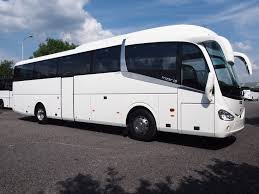The VR technology is increasingly used in various fields such as education, healthcare, and retail. In the travel and tourism sector, especially, AR helps bring historical landmarks to life by offering immersive city guides and improving navigation for tourists. It is also becoming useful in fields like culture and tourism. It lets users explore destinations virtually before they visit.
What is Augmented Reality (AR) & Virtual Reality (VR)?
Augmented reality: AR is an innovative technology created by mobile app development companies. It mixes virtual elements with the physical world to reform how users engage with their environment.AR creates an interactive and enriched experience by overlaying computer-generated images, sounds, and data onto the real-world surroundings through devices like smartphones, tablets, or smart glasses.
Virtual Technology: VR technology creates a realistic digital environment using computer graphics. It fully immerses the users by blocking out the real world and replacing it with a virtual one. You just need to wear VR headsets or goggles to connect with and tour virtual worlds that can mimic real-life places or imagine entirely new ones. Virtual Reality is often used in areas like gaming, training simulations, education, and healthcare.
A Statistical Reasoning for VR Adoption:
A statistical reasoning for VR integration involves analyzing data trends and user behaviour to understand why individuals and industries are increasingly embracing Virtual Reality technology. The points below will help us understand more about VR:
- According to industry reports, the global VR market is expected to touch $50 billion by 2030. This growth makes us realize the rising need in sectors like gaming, healthcare, and professional training.
- Studies show that VR experiences significantly boost user engagement and retention compared to traditional methods.
- Although the initial setup for VR can be expensive, it helps reduce long-term costs in areas like corporate training and remote collaboration. This makes VR a cost-effective investment.
The Impact of Virtual Reality (VR):
Virtual Reality can help reshape the way we connect in digital environments. It can offer you personalized and interactive experiences that far exceed those of traditional media. It is helping us see the growing requirement for VR in various areas.
Education and Training
VR lets students explore historical events, molecular structures, or complex machinery in a hands-on way, which helps them remember and stay interested. And pilots, surgeons, and emergency responders use VR to train safely in realistic situations. This allows them to learn skills without real-world danger.
Healthcare:
VR technology is used in mental health for exposure therapy, pain management, and anxiety reduction. Patients can fight off their fears in a safe and controlled virtual environment. Also, it helps surgeons to practice procedures in 3D to gain experience without touching a patient.
Business and Remote Work
Businesses use VR to make meeting spaces like real-life meetings to help teams around the world work better together. And with the help of Virtual Reality development companies, users can save time and cost by visualizing and testing products with the help of VR at the design stage.
Entertainment and Gaming:
VR games and experiences allow users to explore stories with unexplainable emotion and extraordinary freedom. And artists host VR performances that fans can attend from home, expanding reach and creative possibilities.
Social Connection:
The best part of platforms like VRChat and Meta’s Horizon Worlds is that they allow people to socialize and collaborate in fully virtual spaces. Also, for people with mobility issues, VR provides a new way to travel, connect, and experience the world.
Retail and E-commerce:
The way customers can try clothes, makeup, or furniture in a virtual environment. This improves and heightens confidence in online purchases. VR stores make shopping more fun and satisfying. They facilitate the ease of online shopping with the feel of in-store browsing.
Architecture and Real Estate:
It provides the Clients and stakeholders the ability to move through unbuilt homes or offices to make better-informed decisions. City planners use VR to test building projects. And see how they might affect the real world.
Advantages of VR Integration in Travel Apps:
Integrating Virtual Reality(VR) into travel app development offers a number of advantages for both users and the travel business. Below, we’ll learn more about the main benefits:
Enhanced User Experience:
Users can take virtual tours of the destination, hotels, or attractions before booking. It helps reduce the issues to finding a place and builds excitement.
Informed Decision Making
Travelers can try before they buy, meaning they can explore rooms, views, and amenities to eliminate any hesitation. This helps lead to higher enrollment rates and lower cancellation frequency.
Competitive Advantage:
VR sets the app apart in a crowded market by offering advanced technology functions. And you can also establish the brand value by positioning the app as forward-thinking and customer-focused.
Accessibility:
Travelling can be expensive. VR offers a low-cost alternative to visiting far-off places without spending on flights and accommodations. Let’s understand more about it:
- Some places may be unsafe, restricted, or difficult to reach. VR lets you safely and easily explore these places, making the travel experience bigger and risk-free.
- Schools and educational institutions are also using VR travel apps created by mobile app development companies to offer students useful cultural and geographical lessons.
Marketing and Promotion:
Most of the Virtual Reality development companies make VR experiences to help clients create memorable and interactive marketing campaigns. This can help you hold users’ attention far better than traditional ads or static images. Travel brands can also promote destinations by offering virtual tours. And VR-based content is highly shareable on social media. That can be used to generate buzz to increase organic reach and brand awareness. Travel influencers can also use VR tours to make real, authentic content to boost their promo efforts and connect with their niche audience better.
Major VR Applications in the Travel Industry
With the growing use of VR technologies developed by mobile app development companies, many new applications have made life easier for people. Let’s take a look at all the points below to understand more.
Virtual Destination Tours:
Virtual destination tours use VR technology to let users navigate through a virtual representation of a destination. The experience can include many elements like guided tours, information pop-ups, and 360-degree videos or photos. Some tours even offer a live guide or integrated maps.
Benefits:
- It reduces travel uncertainty and anxiety.
- Helps travellers make better-informed decisions by experiencing a place beforehand.
- Also improves participation and excitement about future trips.
Virtual Flight and Travel Experiences:
Virtual flight and travel experience uses immersive VR to simulate the journey, like flying, train rides, or cruises. They are all about giving users a real feel for the trip itself, not just the destination.
Benefits:
- Increases customer satisfaction by showing what to expect during a journey.
- It also helps reduce travel anxiety for those who are afraid of flying or not sure about long-distance travel.
Cultural and Historical Experience:
The VR experience allows users to find historical sites, cultural landmarks, and traditions. All these events happen virtually. It is like bringing history and heritage to life through connection and storytelling.
Benefits:
- Helps user decide which cultural/historical attractions to include in their itinerary.
- Digitally preserve endangered sites, traditions, and language for future generations.
- Makes learning about history and culture more engaging than textbooks or static books.
Example:
- Google Arts.
- TimeLooper.
Marketing and Promotion:
Travel companies, tourism boards, and hotels can create realistic marketing experiences. That shows off destinations, stays, and activities in a super engaging and convincing way.
Benefits:
- VR creates a WOW factor. And that makes users feel connected to the experience.
- IT also sets the brand apart in a dominating digital advertising market.
- Unique VR experiences are more likely to be shared on social media and attract media coverage.
How are AR apps reshaping travel and tourism?
Augmented Reality (AR) apps are making the travel app development and tourism industry better by offering immersive tools. This will help travelers visualize destinations and find unfamiliar places with ease.
Example:
- Travelers can use AR apps to explore historical sites, landmarks, and museums with interactive features like 3D reconstructions, fun facts, or audio guides. For example: seeing what ancient ruins looked like by pointing at their phone at them.
- These apps also offer real-time information on restaurants or hotels by simply pointing the phone at the surroundings.
- Users can preview hotel rooms and tourist attractions. They can even simulate walking tours using AR. This builds confidence and improves decision-making before booking.
- Apps like Google Lens use AR to translate signs, menus, or documents instantly to help travelers navigate foreign environments more comfortably.
- Tourism boards and travel companies use AR in their marketing.
For example: virtual postcards, 360-degree immersive experience. So that travelers can share on social media.
Conclusion:
Both AR and VR are transforming how we interact with the world by fusing digital content with our physical environment or creating fully immersive experiences. AR enhances the real-world surroundings with useful information and elements. And VR offers complete immersion in virtual environments. Together, these technologies are improving industries like travel, education, driving innovation, and reshaping experience for the future.




